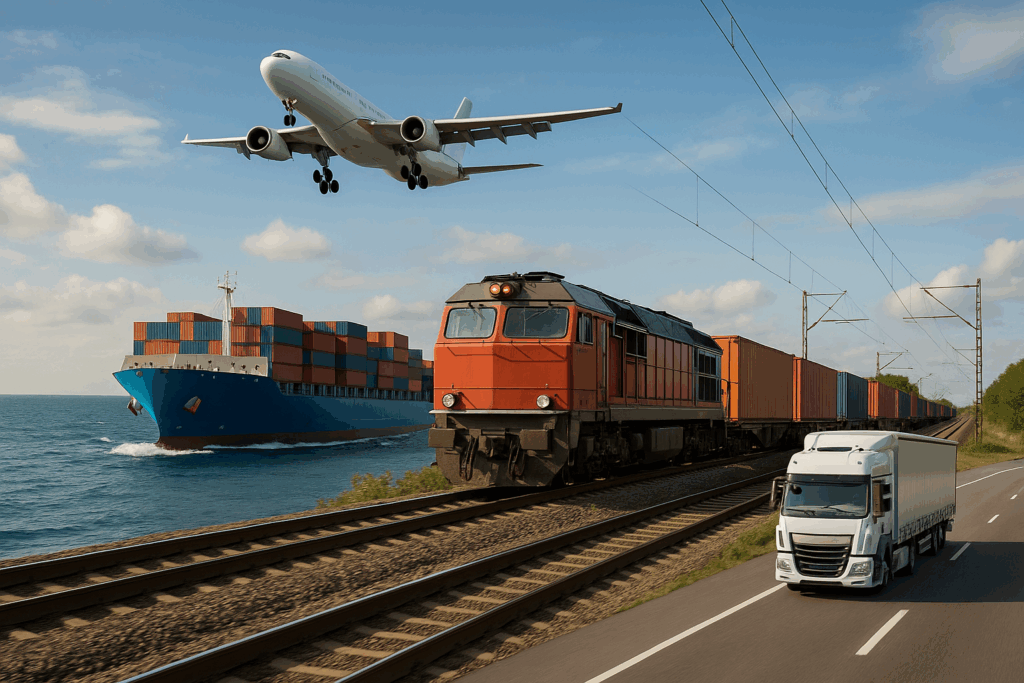China is one of Malta’s key trading partners, supplying machinery, electronics, textiles, and consumer goods. Businesses importing from China need a well-structured shipping plan that balances cost, transit time, and customs compliance. This guide covers everything you need to know about china to malta shipping, from freight forwarding options to customs documents, transit times, and cost-saving strategies.
1. What Are the Main Shipping Options from China to Malta?
Businesses can choose from three primary freight methods:
- Ocean Freight – Best for large and heavy cargo; slower but cost-effective.
- Air Freight – Ideal for urgent, high-value shipments; fastest but expensive.
- Rail + Sea Combined Freight – Less common but offers balance in cost and speed when routed via Europe.
2. How Long Does China to Malta Shipping Take?
| Method | Estimated Transit Time | Best For |
|---|---|---|
| Sea Freight (FCL) | 28 – 35 days | Bulk goods, machinery, retail products |
| Sea Freight (LCL) | 32 – 40 days | Small-volume shipments, cost-sharing |
| Air Freight | 5 – 9 days | Urgent goods, electronics, pharmaceuticals |
| Rail + Sea | 20 – 28 days | Mid-cost shipments, alternative routing |

3. How Much Does China to Malta Shipping Cost?
Costs vary depending on container size, freight method, and cargo type.
| Method | Cost Estimate (per CBM / per container) |
|---|---|
| LCL (Less than Container Load) | $90 – $150 per CBM |
| FCL 20ft Container | $2,000 – $2,600 |
| FCL 40ft Container | $3,800 – $4,500 |
| Air Freight (per kg) | $5 – $9 |
📌Note: Prices fluctuate with fuel surcharges, seasonality, and carrier availability.
4. Do I Need a Freight Forwarder for China to Malta Shipping?
Yes, a freight forwarder ensures smooth coordination across shipping stages, including:
- Booking space with carriers
- Handling customs clearance
- Providing insurance options
- Offering door-to-door delivery services
👉 Check out TopChinaFreight’s services for tailored shipping solutions.
5. What Documents Are Required for Importing from China to Malta?
To comply with customs regulations, businesses must prepare:
- Commercial Invoice
- Packing List
- Bill of Lading (B/L) or Air Waybill (AWB)
- Certificate of Origin
- Import License (if applicable)
- Customs Declaration
Proper documentation avoids delays and penalties at Maltese customs.
6. Ocean Freight: FCL vs. LCL Shipping from China to Malta
- FCL (Full Container Load): Exclusive use of a 20ft or 40ft container, cost-efficient for bulk shipments.
- LCL (Less than Container Load): Shared container space, ideal for smaller volumes but longer transit times due to consolidation.

7. Air Freight from China to Malta: When to Choose It
Air freight is best when:
- Shipments are time-sensitive.
- Goods are high-value (electronics, luxury goods).
- Cargo weight is below 200 kg.
However, due to higher rates, air freight should be reserved for urgent business needs.
8. Customs Duties and VAT for China to Malta Shipping
- EU Import Duty: Applied based on HS code of the goods.
- VAT in Malta: Standard rate of 18% applied on CIF (Cost + Insurance + Freight) value.
- Exemptions: Certain goods may qualify for reduced or zero duty.
9. Risk Management in China to Malta Shipping
- Always use cargo insurance.
- Verify supplier compliance with EU safety standards.
- Work with experienced freight forwarders to reduce customs risks.
10. How to Select the Best Freight Forwarder for China to Malta
When choosing a logistics partner, consider:
- Experience in China–Europe trade routes
- Transparent pricing with no hidden costs
- Door-to-door service capabilities
- Strong customer service and shipment tracking
11.Conclusion
China to Malta shipping requires careful planning around freight method, cost, and customs regulations. Businesses can save money and avoid delays by working with a trusted freight forwarder, preparing accurate documents, and selecting the right shipping mode for their needs.
- Consult TJ China Freight Forwarding for the lowest quote. They will provide you with reliable, cost-effective service.
FAQ:
Q1.What is the cheapest way to ship from China to Malta?
The cheapest option is sea freight LCL, where you share container space. It’s slower but ideal for smaller shipments.
Q2.How fast is air freight from China to Malta compared to sea?
Air freight takes 5–9 days, while sea freight takes 28–35 days. Use air only if shipments are urgent.
Q3.What documents are needed for customs clearance in Malta?
You’ll need a commercial invoice, packing list, bill of lading, certificate of origin, and import declaration.
Q4.Can I track my shipment from China to Malta?
Yes, most forwarders provide online tracking tools for both sea and air cargo, ensuring full visibility.
Q5.What are the main risks of China to Malta shipping?
Risks include delays, customs holds, and cargo damage. Mitigate them with insurance and experienced freight forwarders.

